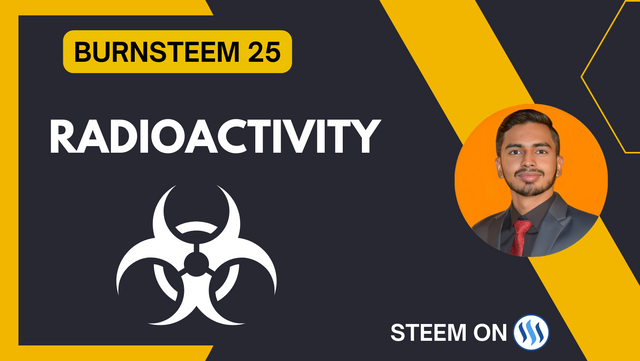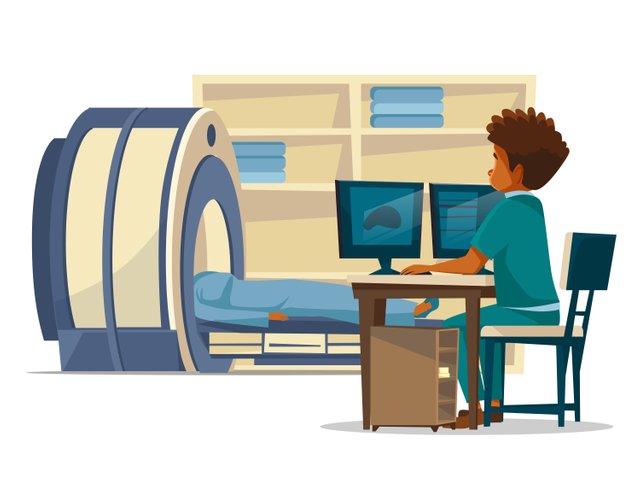The Lethal Impact of Radiation || Chernobyl Disaster ☢️

Absolutely, radiation can indeed lead to death, and it's a very serious issue. There are two main types of radiation: Ionizing and Non-ionizing. We encounter both types in our everyday lives from various sources. Let me break down the differences between them so you can grasp what I'm talking about.
Non-ionizing radiation isn't powerful enough to separate electrons from their atoms. This means it doesn't directly damage DNA and is generally less harmful than ionizing radiation. Non-ionizing radiation includes:
- Radio Waves: Used for TV and radio signals.
- Microwaves: Used in microwave ovens to heat food.
- Infrared Radiation: Generates heat and is used in devices like remote controls.
- Visible Light: The light that we can see with our eyes.
Ionizing radiation, on the other hand, is potent enough to remove electrons from atoms, causing the atoms to become ionized. This type of radiation can damage DNA and result in severe outcomes like cancer or other genetic damages. Common examples of ionizing radiation include:
- X-rays: Used in medical imaging like X-ray photos and CT scans.
- Gamma Rays: Used in nuclear reactions and some types of medical treatments, like cancer therapy.
- Ultraviolet Light: Found in sunlight and can cause skin burns or skin cancer.
Moreover, ionizing radiation can also cause death, especially if the exposure is excessive. However, with the right precautions and safety measures, the harmful effects can be significantly minimized.
As a chemistry student, I first learned about this event when one of our professors shared the story with us. Later, I watched several documentaries which elaborately described what was the reason behind that accident and what havoc it brought along. It is said that the radiations and gases released in that single incident were far in excess of the combined effects of the atomic bombs dropped on Hiroshima and Nagasaki.
We now know this accident, infamous as the Chernobyl disaster, arose from a small error that snowballed into unimaginable consequences. In 1986, Ukraine was still part of the Soviet Union, and the newly established Chernobyl nuclear plant housed four reactors to generate power for the region. Put simply, the reactors worked by using nuclear reactions to heat water into steam, spinning turbines and creating electricity.
Nuclear reactions are chain reactions that, once started, cannot be controlled easily. Control rods are used to manage these reactions by absorbing the neutrons released during the reaction, thus preventing the neutrons from further stimulating the uranium nucleus and releasing more neutrons, helping to keep the reaction under control to some extent. In the case of Chernobyl, the control rods were made of boron carbide with graphite tips.

One day at the Chernobyl Nuclear Power Plant, while conducting a scheduled safety test on reactor number four, plant operators detected an unexpected spike in the reactor's power output. In an effort to reduce the reactor's power surge, the deputy director approved lowering additional control rods into the core.
However, in their haste, the control rods were driven too far in, causing an excessive drop in power production. To remedy the situation, some of the control rods were retracted slightly. Despite the minor adjustment, output remained low so a few more control rods were withdrawn altogether. Unfortunately, only eight rods were left submerged while protocols demanded a minimum of fifteen for safe operation.
Before long, a disastrous chain reaction erupted, multiplying the reactor's output thousandfold, causing the water in the pipes, which was meant to cool the reactor, to evaporate. The reactor's temperature rose, and it started to vibrate.
The typical way to stop this would have been to press the emergency shutdown button, which would send all the control rods back into the reactor. That’s exactly what the engineers on site did, but tragically, as soon as the control rods were reinserted, the reactor exploded.
Now, the question arises: if control rods are supposed to slow down the reaction, why did the explosion occur? The explosion was caused by the graphite tips on the control rods. While boron carbide slows down the reaction, graphite further accelerates it.
When all the control rods were re-inserted at once, as soon as their tips entered the reactor, the reaction, which was already very fast, received an additional boost, and before the boron carbide part could enter, the reactor exploded.
Now, a dome has been built over the site to contain the radiation, which is expected to continue leaking for the next 400 years, making the area inaccessible to the public.
Now, coming to your question of whether had I been there, I could have avoided this accident or not, you see, when you're in an emergency situation, you have to make decisions—quick ones in a very short time. I don't think any of the engineers there would have thought about the graphite at that time, which is why they simply went ahead with the emergency shutdown without thinking deeply.
I believe, if the control rods had been inserted one by one, this accident could possibly have been avoided, but who can defy what fate has written? Anyway, a lot of research has been done after this incident, and the technology to control nuclear reactions has greatly improved.
If anyone is interested in more details about this incident, here is a link to a YouTube video where the entire concept is explained very well with animations, but let me tell you first that this video is in the Urdu language.
Radiation exposures of various forms have become part of our daily living. Most people think that radiation is only emitted by nuclear plants or during medical tests. On the contrary, everything from small devices to large industrial machines exposes us to radiation.
One among the common sources is medical procedures. Treatments such as X-ray, CT scan, and radiation therapy expose ionizing radiations to the aim of killing cancer cells or diagnosing various diseases. Such procedures come in handy at times, but overdoing them could bring adverse effects.
In the world today, you can hardly find a person who does not own a mobile phone. Mobile phones, laptops, and tablets produce non-ionizing radiation. As of now, science is yet to come up with concrete evidence on the danger which these things might pose, but it is just another exposure. Not all exposures, though, should be harmful. However, awareness and precaution should be in place.



Perkembangan teknologi juga berimplikasi secara negatif terhadap ekosistem dan manusia menjadi salah satu objek yang paling rentan.
Dalam konteks yang paling kecil radiasi gadget telah banyak mempengaruhi manusia, saya menjadi salah satu dari itu.
Saat ini karena hampir 14 dalam sehari terpapar radiasi gadget dan komputer, kedua mata saya produktivitasnya menurun. Penglihatan saya terganggu tanpa menggunakan alat bantu seperti kacamata.
Belum dengan paparan radiasi media dilingkungan kerja... 😌
I've noticed my own eyes straining more from all the computer/phone use too. Hope you're able to get some decent screen-free time in here and there...
Your post has been successfully curated by @𝐢𝐫𝐚𝐰𝐚𝐧𝐝𝐞𝐝𝐲 at 35%.
Thanks for setting your post to 25% for @null.
We invite you to continue publishing quality content. In this way, you could have the option of being selected in the weekly Top of our curation team.
Thank you for the support @irawandedy. Much appreciated! 😊
hola amigo
No puedo imaginarme en ese escenario de catastrofe, como dices tú, en las distintas situación hay que tomar decisiones que pueden tanto ''salvar'' como ''acabar'' con la vida de muchas personas, pero todo eso va a depender de la cantidad de conocimiento que tenga el pesonal.
Gracias por participar
entrada #13
Thanks for inviting me on this contest , you really explain all the important fact about radiation, As per I know X ray radiation is various dangerous when we go through many times through any treatment. Apart from that even from mobile towers many kind of radiation will emit which is dangerous for our skin .
Thanks for stopping by my post and leaving a thoughtful comment. 😊
Upvoted. Thank You for sending some of your rewards to @null. It will make Steem stronger.
@tipu curate
;) Holisss...
--
This is a manual curation from the @tipU Curation Project.
Upvoted 👌 (Mana: 2/8) Get profit votes with @tipU :)